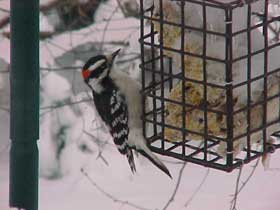 Since European settlement larger and larger pieces of the Iowa landscape have been altered to provide habitat for just one animal: people. With the conversion to towns, subdivisions, roads and other development, wildlife have much less habitat.
Since European settlement larger and larger pieces of the Iowa landscape have been altered to provide habitat for just one animal: people. With the conversion to towns, subdivisions, roads and other development, wildlife have much less habitat.
Just as they do on the farm, conservation practices on nonagricultural land can help increase food and shelter for birds and other wildlife, control soil erosion, reduce sediment in waterways, conserve water and improve water quality, inspire a stewardship ethic, and beautify the landscape. Imagine if the space currently dominated largely by lawns that provide very little habitat was landscaped with wildlife in mind? Our yards could become healthier places for wildlife, and more interesting spaces for us.
By providing sources of food, water and cover, you can turn your yard into a lively place full of songbirds, toads and frogs, butterflies and other wildlife. The links below provide information on wildlife-friendly landscape design to help you reconstruct your own wildlife landscaping. Whether you have rural acreage, a suburban yard, or a city lot, you can help protect the environment and add beauty and interest to your surroundings.
Iowa State University Extension
Missouri Department of Conservation
National Wildlife Federation